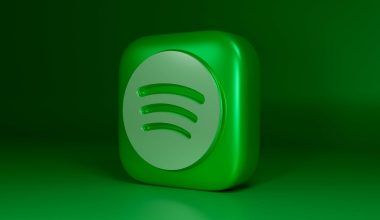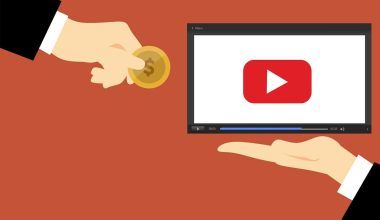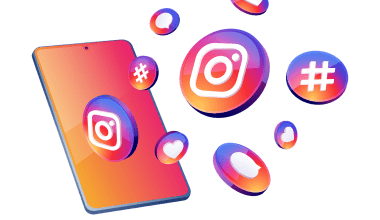If you’ve ever wondered how artists earn money from Spotify, you’re not alone. For many music lovers, Spotify is a magical platform where you can listen to your favorite tunes anytime. But behind the scenes, artists rely on Spotify as a key source of income. How does it all work? This guide breaks it down in plain and simple terms.
Let’s dive in and explore how artists earn money on Spotify and how you, as a listener, play a role in their journey.
What is Spotify and Why Is It Important for Artists?
Spotify is a digital streaming platform where users can access millions of songs, albums, and playlists. For artists, it’s like a giant stage where they can showcase their music to a global audience. Whether you’re a big-name star or an indie musician, Spotify gives you an opportunity to connect with listeners worldwide.
But why is Spotify so crucial? It’s simple: the platform allows artists to monetize their music through streams. Every time you hit play, it counts!
How Do Artists Get Paid from Spotify?
The process might seem a bit complex, but here’s the gist:
- Streaming Royalties
When a listener plays a song, Spotify pays the artist a fraction of a cent for that stream. While it might seem small, it can add up quickly if the song is popular or lands on curated playlists. - Distribution via Labels or Aggregators
Most artists don’t work directly with Spotify. They upload their music through distributors like DistroKid, TuneCore, or CD Baby. These platforms act as middlemen, collecting royalties from Spotify and transferring them to the artist. - Premium vs. Free Streams
Spotify has both free and premium users. Artists earn more from streams by premium subscribers than free listeners because of the subscription revenue.
How Much Does Spotify Pay Per Stream?
This is one of the most common questions artists have. Unfortunately, the answer isn’t straightforward. Spotify pays roughly $0.003 to $0.005 per stream. In simpler terms, you’d need about 250 to 300 streams to make one dollar. Sounds small, right? But don’t lose hope yet—there are ways to maximize your Spotify earnings.
Factors That Affect Spotify Earnings
- Location of the Listener
Streams from countries with higher subscription rates tend to pay more than those from regions where Spotify earns less per user. - Your Distribution Agreement
If you’re signed with a label, your royalties might be split with them. On the flip side, independent artists who use aggregators typically keep a larger share. - Playlist Placements
Landing on popular playlists like “Discover Weekly” or genre-specific playlists can significantly boost your streams—and your earnings.
How Can Artists Maximize Their Earnings on Spotify?
If you’re an artist looking to make more money on Spotify, here are some tips to help you out:
- Promote Your Music
Don’t rely on Spotify’s algorithms alone. Share your tracks on social media, collaborate with influencers, and ask fans to add your songs to their playlists. - Release Music Regularly
Consistency is key! Regular releases keep your profile active and encourage listeners to keep coming back. - Optimize Your Spotify Profile
A polished profile with an updated bio, professional photos, and links to your social accounts can make a big difference. It helps you look credible and approachable to new fans. - Leverage Data
Use Spotify for Artists to analyze your streams, audience demographics, and playlist activity. Understanding your listeners helps you create music they’ll love.
Beyond Royalties: Other Ways Artists Earn Money on Spotify
Spotify isn’t just about streaming royalties. There are other ways artists can monetize their presence:
- Merchandise Sales
Spotify allows artists to showcase merch directly on their profile. This includes t-shirts, posters, and even vinyl records. - Fan Support Through Patreon or Crowdfunding
Use your Spotify fanbase to drive traffic to platforms like Patreon, where dedicated fans can support you financially. - Concert Promotions
Spotify integrates with platforms like Songkick, helping fans discover your live shows and buy tickets.
The Role of Fans in Artists’ Earnings
As a listener, you’re an essential part of an artist’s success on Spotify. Here’s how you can support them:
- Stream Their Music
The more you stream, the more royalties they earn. Simple as that! - Follow Their Profile
Following an artist boosts their visibility and helps Spotify recommend their music to others. - Add Their Songs to Playlists
When you include their songs in your playlists, it increases their chances of being discovered by new listeners. - Upgrade to Spotify Premium
Premium streams pay artists more than free streams. Plus, you get an ad-free experience. Win-win!
Challenges Artists Face on Spotify
While Spotify offers incredible opportunities, it’s not without challenges. Here are some common hurdles:
- Low Per-Stream Payments
As mentioned earlier, the payout per stream is small. This means artists need millions of plays to earn a substantial income. - Competition
With millions of tracks available, standing out is tough. It requires consistent effort and strategic promotion. - Royalties Splits
Artists signed with labels often have to share their earnings, which can significantly reduce their take-home pay.
Conclusion: Is Spotify Worth It for Artists?
Absolutely! While it may not be a goldmine for everyone, Spotify provides a platform to reach listeners worldwide, build a fanbase, and grow your music career. The key is to be proactive—promote your music, engage with fans, and explore every monetization avenue available.
So, the next time you wonder, “how do artists earn money from Spotify?” remember it’s a mix of royalties, strategy, and fan support. Whether you’re an artist or a listener, you play a vital role in keeping the music alive.
For further reading, explore these related articles:
- What Makes Arms Around You Lyrics So Special?
- Best Kendrick Lamar Songs – A Journey Through His Genius
For additional resources on music marketing and distribution, visit Deliver My Tune.






